| Columns Retired Columns & Blogs |
Arcam FMJ CD33 CD player Measurements
Sidebar 3: Measurements
The Arcam's maximum output level was 2.22V RMS, to specification but almost 1dB higher than the CD standard's 2V. The player preserved absolute polarity and the output impedance was also to specification, at a usefully low 47 ohms across the band. Error correction, assessed using the Pierre Verany Test CD, which has laser-cut gaps in the data spiral up to 2mm in length, was the best I have ever encountered—there were no audible glitches in the sound at all. Looking at the data from the CD33's S/PDIF output using RME's Digicheck program indicated that one heck of a lot of error concealment was going on with the longer gaps in the data, but this didn't result in the player muting. Extraordinary performance.
Frequency response (fig.1, top pair of traces) was perfectly flat, though a slight droop in the top three octaves (-0.25dB at 20kHz) can be seen with pre-emphasized data (bottom traces). Channel separation was superb, with any crosstalk below 10kHz buried beneath the player's noise floor (fig.2).
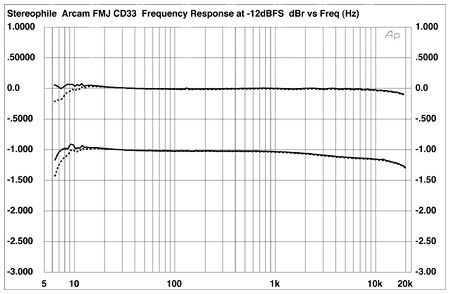
Fig.1 Arcam FMJ CD33, frequency response at -12dBFS into 100k ohms, with de-emphasis (bottom) and without (top). (Right channel dashed, 0.5dB/vertical div.)
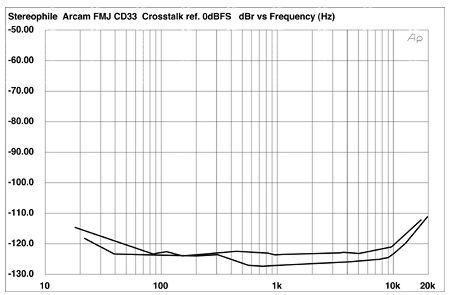
Fig.2 Arcam FMJ CD33, channel separation (10dB/vertical div.).
Analyzing the Arcam's analog output spectrum with a swept 1.3-octave bandpass filter while it decoded dithered data representing a 1kHz tone at -90dBFS gave the traces shown in fig.3. Other than a trace of 60Hz hum in the left channel—at -120dBFS, this is way below the threshold of audibility—the noise floor in this graph is due to the recorded dither on the test CD, implying that the Arcam's intrinsic performance is better than 16-bit. Similarly, the plot of the player's linearity error (fig.4) really shows only the influence of the 16-bit dither noise. With its excellent linearity and low noise, the FMJ CD33's reproduction of an undithered 1kHz tone at exactly -90.31dBFS (fig.5) was among the best I have encountered, the three DC voltage levels that describe this signal being very clearly defined.
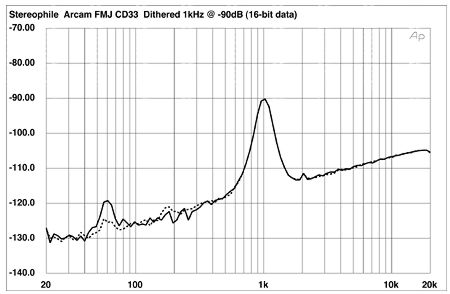
Fig.3 Arcam FMJ CD33, 1/3-octave spectrum of dithered 1kHz tone at -90dBFS, with noise and spuriae, 16-bit CD data. (Right channel dashed.)
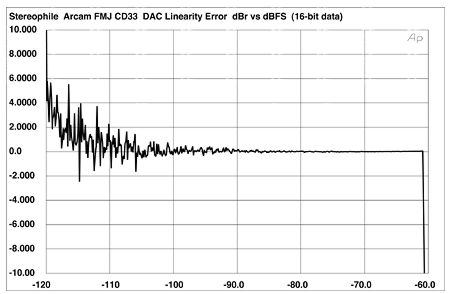
Fig.4 Arcam FMJ CD33, left-channel departure from linearity, 16-bit CD data (2dB/vertical div.).
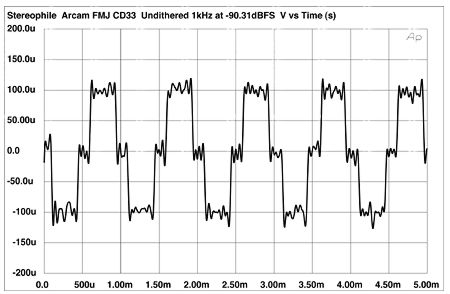
Fig.5 Arcam FMJ CD33, waveform of undithered 1kHz sinewave at -90.31dBFS, 16-bit CD data.
Harmonic distortion was vanishingly low, even into low impedances. At full scale into 8k ohms, the measured THD (the actual sum of the harmonics, without the contribution of noise) was just 0.0015%, with the third harmonic the highest in level, at -97.4dB (fig.6). Intermodulation distortion, even at full level into a low 4k ohm load, which is below the minimum recommended by the manufacturer, was extremely low, with the difference component resulting from an equal mix of 19kHz and 20kHz tones lying at just 0.0003% (fig.7).
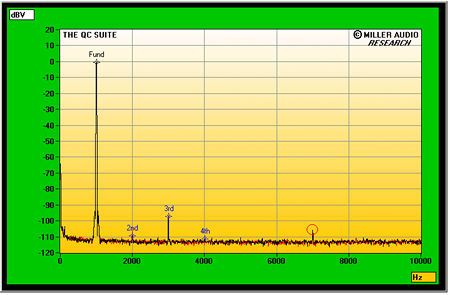
Fig.6 Arcam FMJ CD33, spectrum of 1kHz sinewave, DC-1kHz, at 0dBFS into 8k ohms (linear frequency scale).

Fig.7 Arcam FMJ CD33, HF intermodulation spectrum, DC-25kHz, 19+20kHz at 0dBFS into 4k ohms, CD data (linear frequency scale).
Using the Miller Audio Research Jitter Analyzer to assess the Arcam's rejection of word-clock jitter, the result was very low in absolute terms, but varied according to whether or not I lifted the CD player's AC ground. With the AC ground lifted, the jitter level was a low 195.5 picoseconds peak-peak, with a sideband pair at ±15.6Hz contributing a third of that total. Lifting the AC ground caused those sidebands to disappear, reducing the measured jitter to 171ps. However, a pair of sidebands appeared at ±120Hz (fig.8, blue "2" markers), contributing 38ps to the total. Data-related jitter (red numeric markers) was at the background level with the analytical signal used, though a pair of sidebands at the power-supply-related frequency of 60Hz (brown "1" markers) is a constant feature of the CD33's jitter spectra.
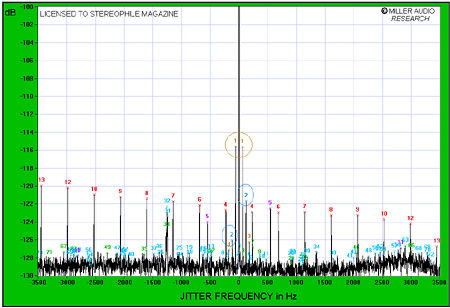
Fig.8 Arcam FMJ CD33, high-resolution jitter spectrum of analog output signal (11.025kHz at -6dBFS sampled at 44.1kHz with LSB toggled at 229Hz). Center frequency of trace, 11.025kHz; frequency range, ±3.5kHz.
Overall, this is about as good a measured performance as you can get from the 16-bit CD medium.—John Atkinson
- Log in or register to post comments



































